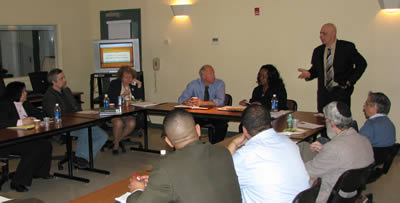
Today was the first meeting of the CIS ePortfolio cohort that is being sponsored by LaGuardia’s Center for Teaching and Learning. The main purpose of the faculty group is to research the best ways in which the CIS department can integrate ePortfolio into the Introduction to Computers course (CIS 100). The CIS 100 course is a required course for many of the academic programs at LaGuardia, and as a result, is a perfect class in which to reinforce the technical principles of ePortfolio.
I was asked to participate in this ongoing seminar because, I had taken a lead in researching ways in which digital portfolios can be used to enhance the performance of students in technical disciplines. For example, the New Media Technology program, in which I am charged with directing, already has ePortfolio integrated into every single course. Much of my research into ePortfolio has centered on how reflection can serve as a means of improving the practical employment outcomes for students in New Media. When you consider that digital portfolios have been an essential tool in acquiring work within the field of New Media, it stands to reason that students can improve their digital portfolios by giving more thought to the items that should appear in the final presentation.
During the past year I have focused heavily on developing engaging activities and assignments that will help students refine their final ePortfolios and thus, refine their career objectives. ePortfolios, also referred to in New Media circles as Online Portfolios, are critically important in assisting students in obtaining work in the field of digital design. Some of the assignments that I have designed force students to look back at much of their previous work and look for patterns of interest. These patterns can help students to identify areas within New Media that can match up to their passions and talents. Once these interests are identified, I can better assist students on crafting an ePortfolio that will effectivily market themselves to employers in their specialty field.
The field of New Media/Digital Design is extremely broad. As a result, there are various specialties in which our students can find employment. It is precisely for this reason that it is vitally important for students to reflect upon their interests, talents, and goals and have those sentiments integrated into their professional portfolios. Part of this reflective process involves both self reflection and group critique. Students are required to display their portfolio concepts, designs, and gallery pieces to the entire class for suggestions and critique.
My position as a member of the CIS department, and the time that I spent as the Co-Director of the LaGuardia ePortfolio Initiative, has made me a logical choice to work with the group. I am hopeful that the group of educators that are in this group can determine the best way to implement ePortfolios into the CIS curriculum.

